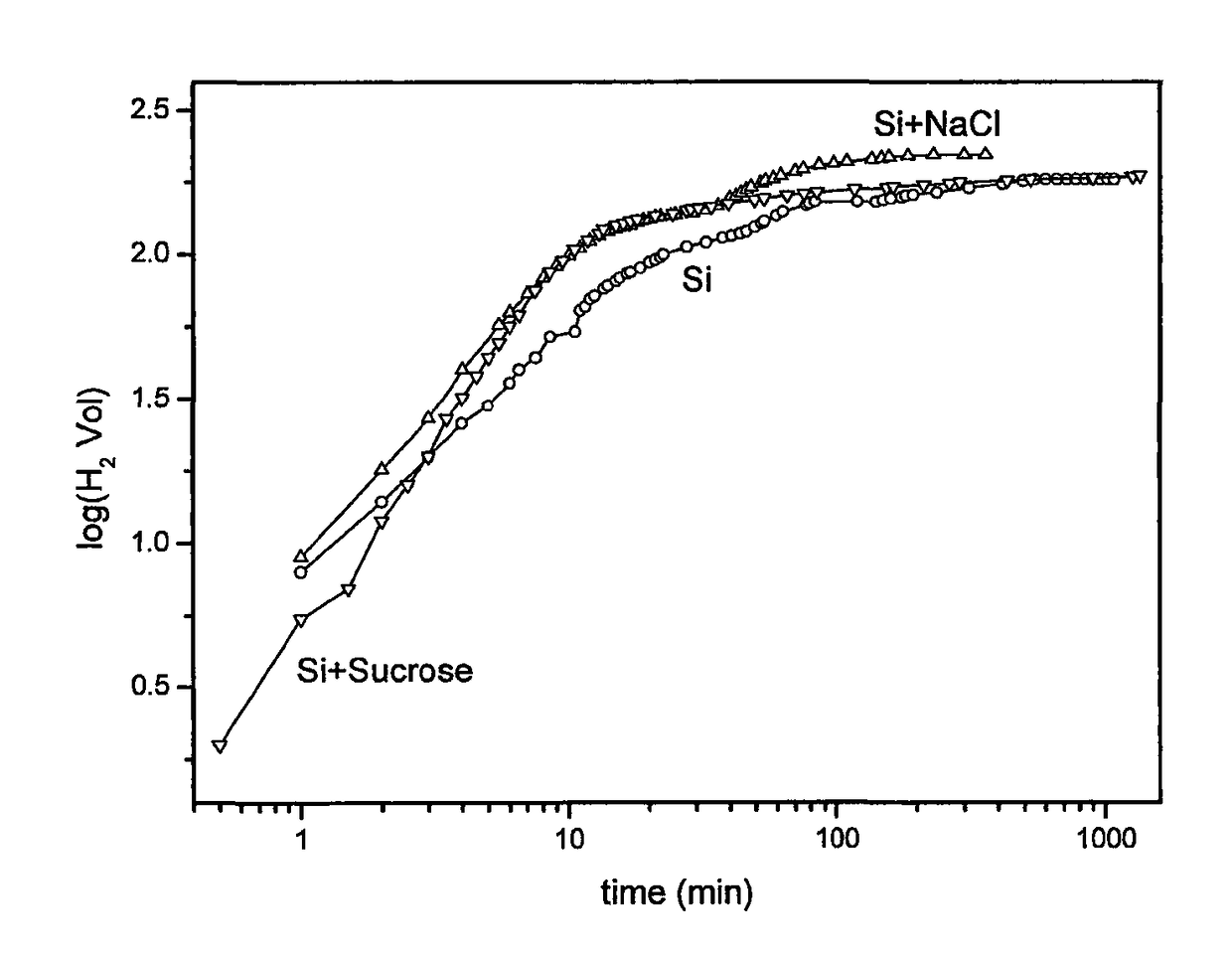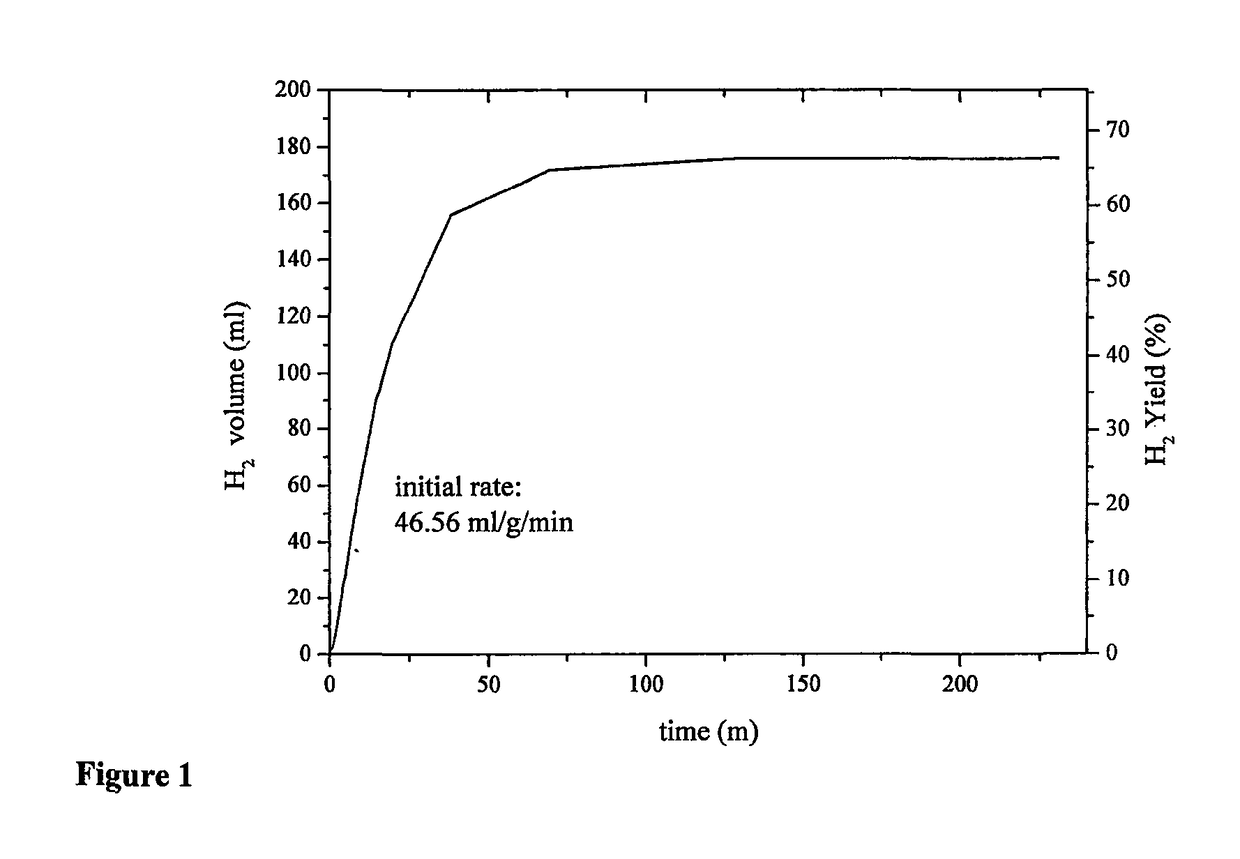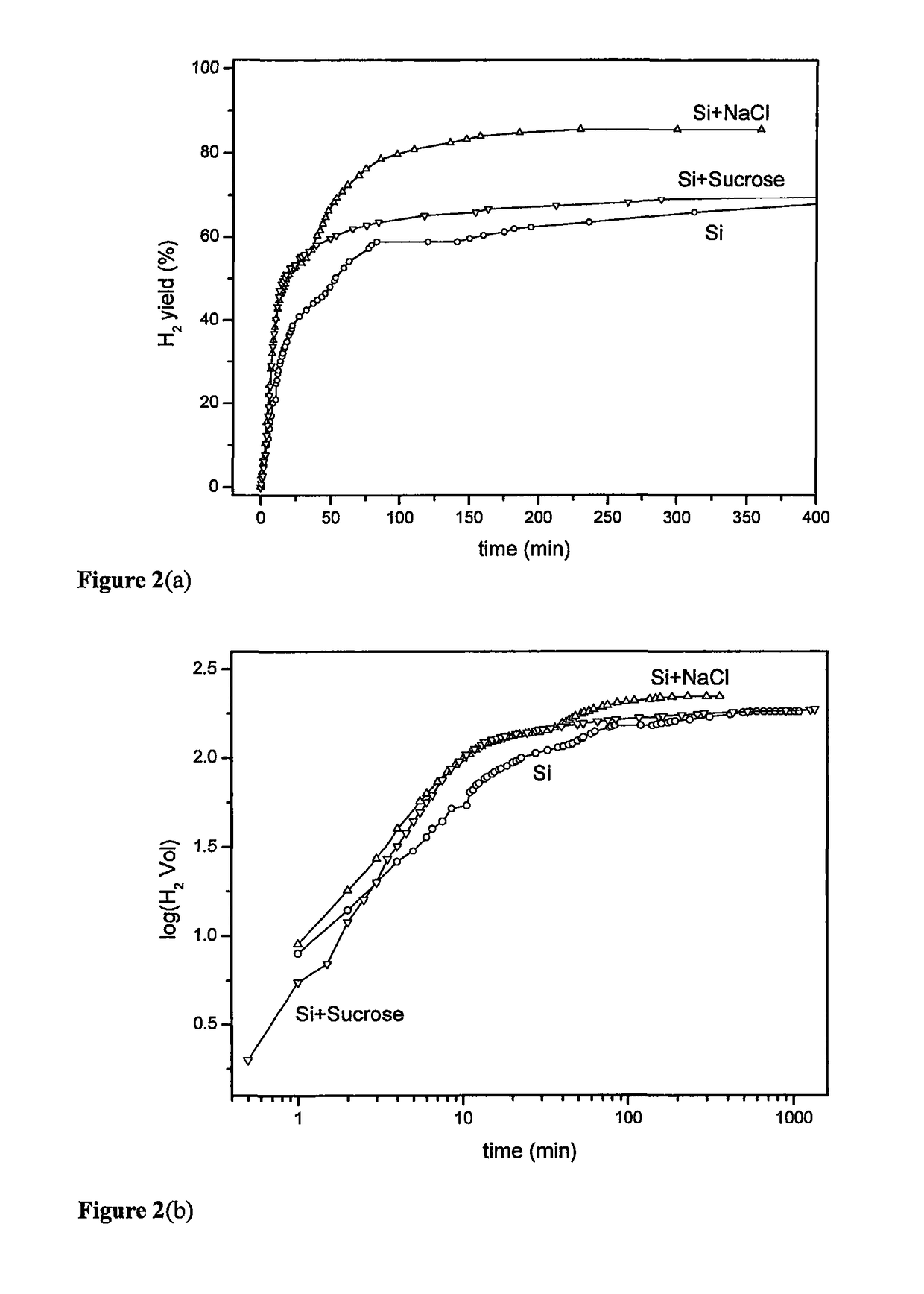Composition for hydrogen generation
a technology of hydrogen generation and composition, applied in the direction of hydrogen production, transportation and packaging, energy input, etc., can solve the problem of limited hydrogen yield from silicon hydrolysis, and achieve the effect of increasing the initial hydrogen generation rate and the conversion yield
- Summary
- Abstract
- Description
- Claims
- Application Information
AI Technical Summary
Benefits of technology
Problems solved by technology
Method used
Image
Examples
examples
Experimental Techniques
Milling Experiments
[0363]Silicon pieces (99.95% purity, particles around 1-3 mm, Aldrich), sodium chloride (99.5% purity, Sigma-Aldrich), sucrose (99.5% purity, Sigma-Aldrich), glucose (analytical grade, Fisher Scientific) and acetonitrile (HPLC grade S, Rathbum) were used as the starting materials. Polyacrylic acid sodium salt (PAA, Mw 15000) and poly(diallyldimethylammonium chloride) (PDDA, Mw 200,000 to 350,000) aqueous solution were purchased from Aldrich, and dried to anhydrous to be used as additional additives. The mixture of silicon and additives, and 3 ml acetonitrile were loaded into 20 ml tempered steel grinding bowls containing 5 mm diameter steel balls inside a nitrogen purged glove box with a weight ratio of powder to steel ball 1:17 to 1:20. The mixture was milled in a Fritsch planetary ball-mill at 900 rpm for 10 minutes followed by another 10 minutes after a 10 minutes cooling pause in between. The milling speed and time was optimised based on...
PUM
| Property | Measurement | Unit |
|---|---|---|
| ionic strength | aaaaa | aaaaa |
| ionic strength | aaaaa | aaaaa |
| solubility | aaaaa | aaaaa |
Abstract
Description
Claims
Application Information
 Login to View More
Login to View More - R&D
- Intellectual Property
- Life Sciences
- Materials
- Tech Scout
- Unparalleled Data Quality
- Higher Quality Content
- 60% Fewer Hallucinations
Browse by: Latest US Patents, China's latest patents, Technical Efficacy Thesaurus, Application Domain, Technology Topic, Popular Technical Reports.
© 2025 PatSnap. All rights reserved.Legal|Privacy policy|Modern Slavery Act Transparency Statement|Sitemap|About US| Contact US: help@patsnap.com



